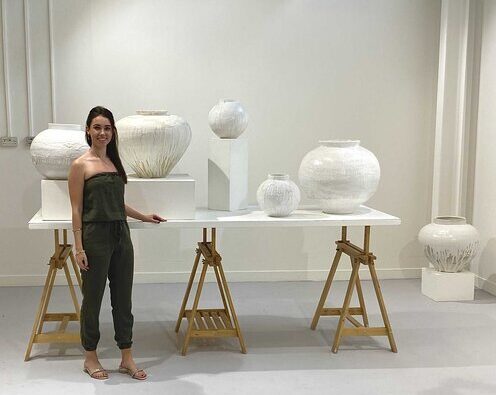My dissertation explored the Japanese concept of wabi sabi, in relation to ceramics, where naturally occurring imperfections are celebrated and favoured over perfect, manufactured works. The seemingly simplistic vessels hold a complexity where contradictions and perceptions of disparity are explored. This notion of observing and highlighting uncontrived imperfections is a key theme within my work, which challenges the boundary between control and manipulation of material. I achieve this balance through accepting a lack of control with the results from the intensive high-temperature firing process. Due to the ambitious scale of the works, stress fractures and fissures develop during the unforgiving firing. I manipulate these blemishes to appear as scar-like marks, demonstrating vulnerability and fragility, as well as a symbol of strength.
The jars are glazed in a white finish in order to allow the geometry of the form to be the primary characteristic. The moon’s gravitational force on the Earth and its subsequent control over the tide is reflected in the application of the partially fluid glaze. Gravity interacts with the glaze during the firing process, which flows over the contours of the form and results in a layered surface of varying opacities of white. This variable exterior is heightened by the exaggerated curvature of the form.
I explore subtle nuances whilst refining the relationship between the diameter and aperture in order to achieve a collection of work that is ‘full’ in the sense of the jar being a container of space. My moon jars celebrate asymmetry in the sense that each sculpture is unique and unrepeatable. No two jars can ever be the same.
This concept excites me and provides the drive to continue to challenge the boundaries between material, form, and surface whilst celebrating uncontrived imperfections along the way.
FORM Exhibition Info — Highgate Contemporary Art (highgateart.com)




